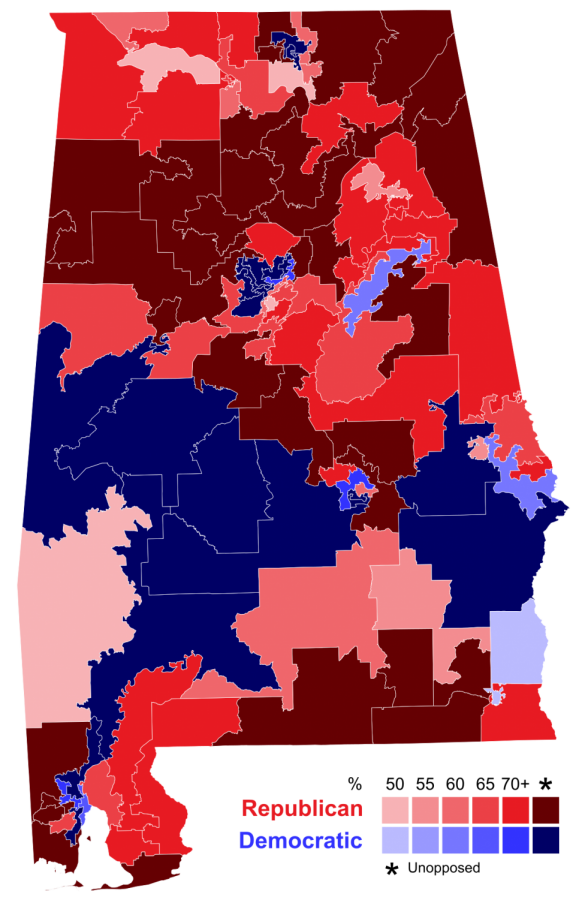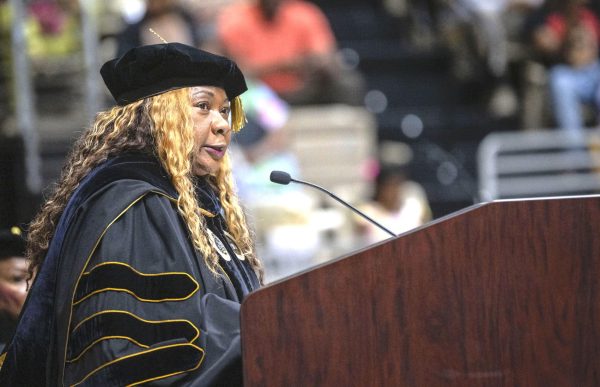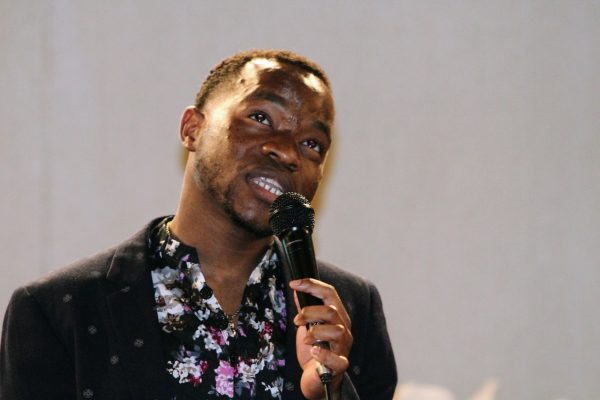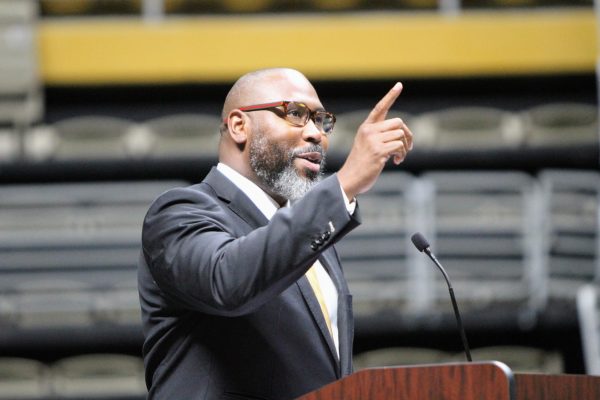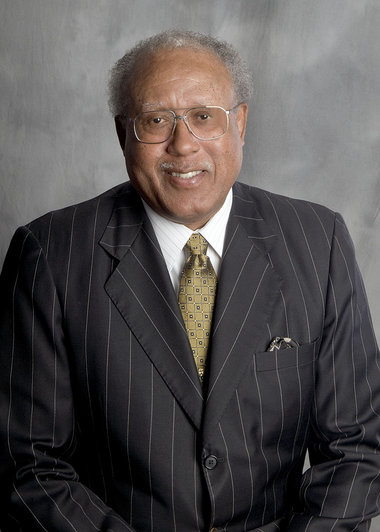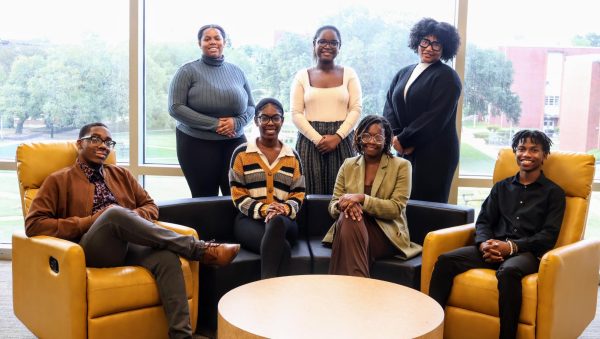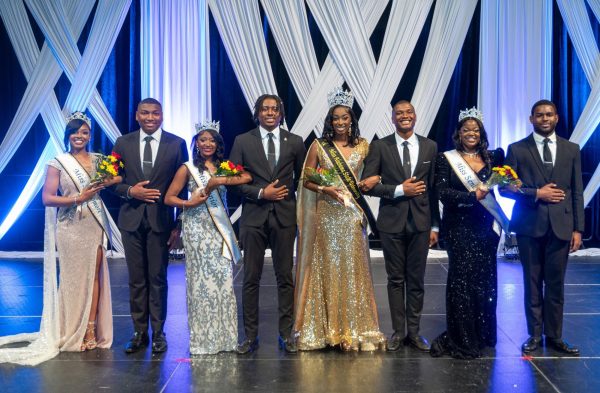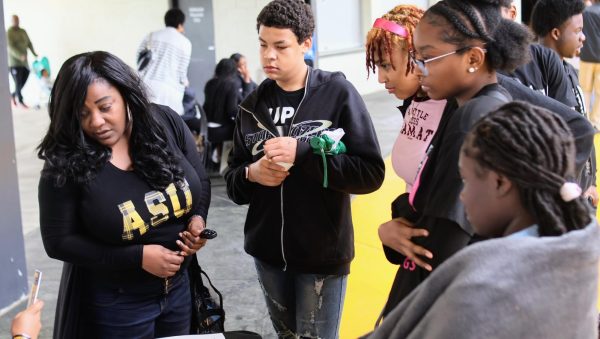With some Southern states trending blue, Alabama remains Republican red. But for how long?
November 4, 2020
Alabama and Mississippi represent an electoral pattern that is splintering from other Southern states where voting along racial lines is the central issue, historian Wayne Flynt said Tuesday.
Flynt, a professor emeritus at Auburn University, said a more “progressive” and “prosperous upper South” is “rapidly moving toward more diversity” and toward Democratic candidates. He said the shift has occurred in Virginia, where Democrats are winning statewide elections, and North Carolina, which is “at the very least purple and has been trending blue,” though President Donald Trump held a slim 1.4 percentage point lead over Democratic presidential nominee Joe Biden late Tuesday.
Flynt said states like South Carolina and Georgia are trending more purple – where general election races for the Senate were more competitive than in Alabama. In Alabama, the Senate contest pitting incumbent Democratic Senator Doug Jones against Republican Tommy Tuberville was long been considered the most likely to flip because the state is long viewed as a reliable GOP stronghold. Tuberville rolled to an easy 20 percent point win over incumbent Democratic Senator Doug Jones.
Flynt said “the next shoe to drop” is in traditionally Republican Texas, where Trump held a 6 percentage point lead over Biden with 84% of precincts counted early Wednesday. Trump won Texas by a 9 points in 2016, while Republican Mitt Romney won the Lone Star State by 15.8 percentage points in 2012.
“We are in the final phase of transitioning from a South when race was a central issue, and nothing else mattered,” Flynt said before election results were compiled on Tuesday. “When the Democratic Party left those states to settle their own problems, lower and middle-income whites voted Democrat. When liberal Democratic presidents started meddling with race under pressure from their increasingly diverse base, the Southern states felt under siege and voted GOP. Now, the number of Southern states influence by internal migration … and immigration, is growing every cycle.”
Changing demographics
Flynt said he believes only a handful of the following deep red Southern states — Alabama, Mississippi, Louisiana, Arkansas, Tennessee and Kentucky – will “survive the 2024 cycle” by having election outcomes that mirror Tuesday and Wednesday’s results.
Jess Brown, a retired political science professor at Athens State University, said the rise of the Millennial voter (ages 23 to 40) and decline of the aging Baby Boomers will place extra pressure on Alabama Republicans to diversify and address different issues that resonate among the GOP base today, such as abortion and LGBTQ rights. According to Brown, the younger generation is “ambivalent” toward “burning lifestyle issues” that drive conservative voters.
“I think we’ll see that generational shift that will start today and continue and may well weaken the saliency or the strength of the social lifestyle issues in the Republican ranks,” said Brown.
Flynt said he anticipates by 2042, whites will “constitute a minority of the U.S. population” and Brown said that Alabama Republicans will have to increasingly focus on a more multi-racial coalition in future contests.
Fueling that change is how the state will accept growth through immigration from other countries. Alabama, over the past decade, had a sluggish growth rate due to two factors: It has one of the nation’s highest death rates and one of the lowest rates of immigration from other countries. The result has put Alabama at risk of losing one of its seven congressional seats. Texas could gain two or three congressional seats.
“That development is further along in Texas and Florida,” said Brown, referring to the immigration boost. “But if Alabama – and places like Mobile, Huntsville and Birmingham, certainly – wants to continue to benefit from federal largesse as we have now for multiple generations, then the state is going to have to accommodate itself better to the politics of multi-racial diversity. This idea that white people will vote overwhelmingly and elect white people and send them to Washington, D.C., and that those individuals as Republicans will sit down and work effectively with politicians who represent multi-racial and multi-ethnic voting blocs, then I think you are dreaming.”
Reliable Republican
Republicans, though, are confident that their strength in Alabama will last for many years to come. Some also believe that the more liberal Millennials today will naturally become more conservative voters as they age.
“There are some Southerners becoming more liberal, but you have a younger generation,” said Angi Stalnaker, a GOP strategist based in Montgomery. “We see every generation of youth starting out as liberal and becoming more conservative (as they get older).”
Stalnaker said the reason why states like Georgia are increasingly become bluer isn’t because Georgia natives have become more supportive of the Democratic Party. She said that Georgia, like other growing states, has welcomed an influx of migration from Northern states “who are bringing their liberal tendencies to the South.” She added, “it’s not Southerners being more liberal.”
Georgia, once a reliably red state, has become one of the key presidential battleground states where presidential votes continue to be counted.
In Alabama, the fastest growing county is Baldwin County. But the county is deeply conservative, where all elected officials in state seats are Republican.
Stalnaker said, “What you have in Baldwin and Mobile counties are fairly wealthy and conservative residents who are retiring to that area versus Atlanta, where people are moving there for work. It’s a different demographic.”
Adam Bourne, the chairman of the Mobile County GOP and a member of the Chickasaw City Council, said that the GOP continues to become more dominate in Alabama. He noted that recent elections, such as 2010 and 2018, solidified the Republican dominance over Democrats in statewide contests.
“There is a trend in Alabama of getting even more red in a lot of ways,” he said. “Nationally, there are Southern states appearing to be closer (in the Republican-Democratic split) than they once were. Politics tends to cyclical. In the late 1990s and 2000, there was a brief trend with Southern states having Democratic governors. But politics change over time. The close races we are seeing in North and South Carolina (this year) doesn’t necessarily indicate a broader shift. It could be something unique to this particular election.”
Stalnaker said that Alabama isn’t shifting blue anytime soon. After the 2018 general election, in which Alabama Republicans scored a greater majority in the Legislature during a midterm election in which Democrats dominated in other states, Stalnaker said that Alabama voters elected its most “conservative” state government.
“We are a strong Christian state,” said Stalnaker. “We understand hard work and the value of hard work and the dignity of hard work and that lends itself to the Republican vote.”


